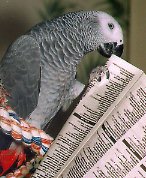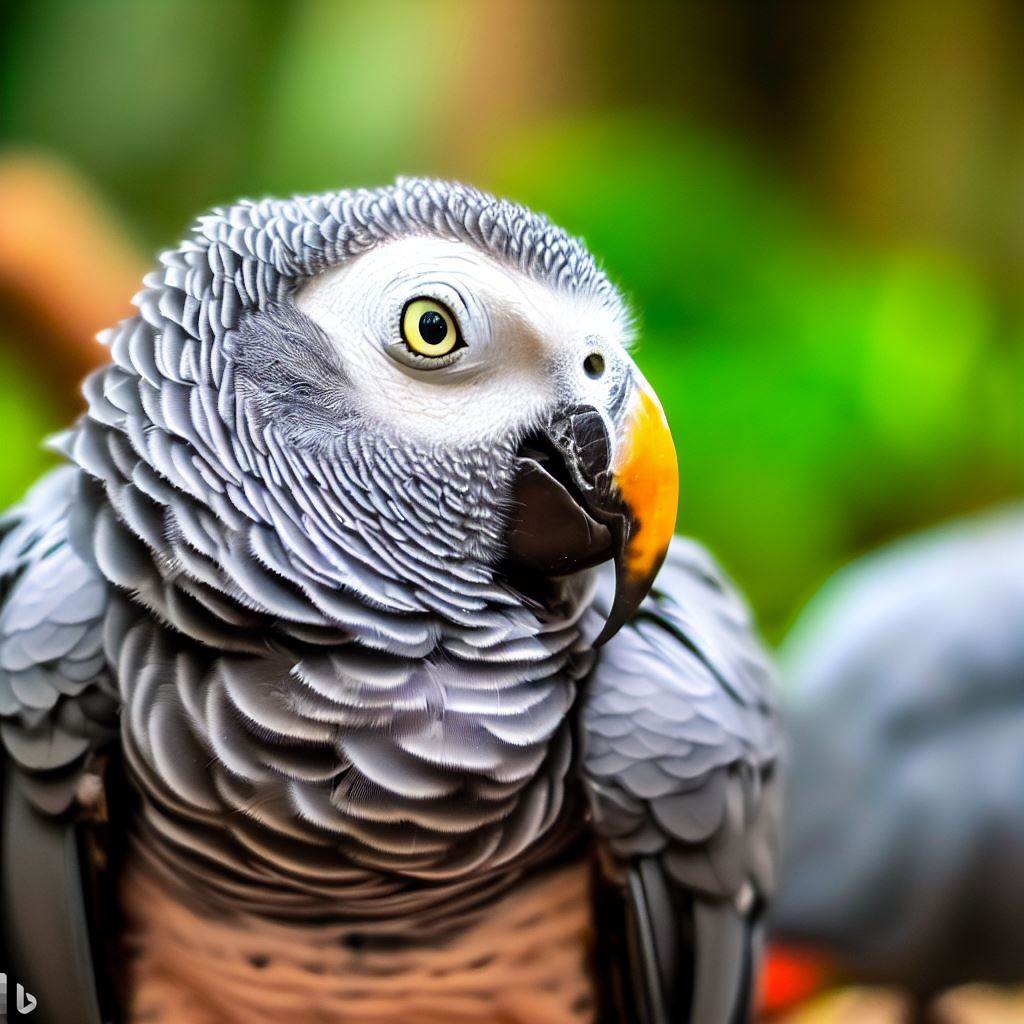
An inexperienced owner may not understand the systematic methods one needs to employ to ensure that baby Greys are properly fed, socialized and weaned. The problems associated with any temporary “acting out” or early rebellion can be understood and avoided with the assistance of an experienced and knowledgeable breeder or handfeeder who sells weaned babies. If the baby is properly managed from the earliest weeks of life by an experienced breeder or handfeeder, problems with unwanted behavior will be temporary and associated with coming of age. The first two years of a Grey’s life are crucial for the evolution of the adult bird that is comfortable living with humans. It is important that unwanted behavior in young birds be dealt with promptly and properly without aggression or attempts to dominate the bird. Aggressive human behavior is frightening to Greys and human attempts to dominate can create very serious behavior problems in them.
These are of some of the techniques I have discovered which work for me and for my Grey babies. Is all of it necessary? I don’t know. I only know it works for me.
I love and respect my babies very much and I think they know that. I am never rushed or impatient with them. I am always very gentle and reassuring. As an example – the youngest baby in a recent clutch was easily startled when I reached for him to handfeed him. Over several days, I talked to him softly without touching him, put my face close to him, kissed his beak and asked him if he was ready to eat. It only took a few days for him to stop being startled or pulling away when I reached for him.
My babies are never handled roughly. They are always supported so that they are never in fear of falling. I pick them up for feeding from the rear, cupping their feet and rear on the palms of my open hands. If you pick them up from the front, they will scoot their rear over the tips of your fingers. They feel much more secure when they are picked up from the rear. After a few weeks, the babies will actually turn their backs and shuffle their clumsy feet sideways into the palms of my hands. I approach their feet from the side and they shuffle into the slightly cupped palms of my hands.
Before I remove the babies from the brooder, I softly cluck to them and tell them what is going to happen. They don’t like my opening of the brooder door at first, but soon start heading toward me when I come to feed them. I place my hands under the wings on the babies’ sides. Soon they are lifting their wings when I reach for them. My Grey babies don’t clutch tightly with their feet and talons when they are being transported or when they are perching on my hand. They quickly learn they won’t be allowed to fall. As I spoonfeed, I take advantage of that opportunity to put my hand on the back of the head, on top of the head, on their backs. Sometimes I cover their eyes and their heads (except for the beak) completely with my hand. I always clasp them softly and gently. I want to accustom them to being touched.
As they become older, I use a hot damp paper towel on their backs, wings and tails after I wipe their beaks. I spread the wings, wipe off the wings, the top and the underside of the tail. This is a way to accustom them to touch and the handling of the wings and the tail.
The babies in the weaning cage all come tumbling to the door when I open it. When I sit beside the cage, they come to the sides so I can tickle under the jaw and pet their beaks. What I see in my babies are out-going assertive birds, interested in exploring, curious, attracted to the new food in the dish and the new toys.
I begin misting my baby Greys when the flight and tail feathers start emerging. There should be no reason for a Grey to hate and fear being misted, provided they are exposed to baths from a very young age. An older bird may not like his bath, but this fear can be avoided by very early bathing or misting. This early misting, especially of the flight and tail feathers, at a very early age will avoid marks on the feathers. Most often these “stress” marks are caused by the ends of the keratin sheath rubbing against the feather as they grow farther and farther out of the sheath. That likely accounts for the regularity of the marks since the feathers grow at a pre-determined rate. This is not to say that “stress” marks aren’t present on the feathers during illness or from a lack of food (crop down-time or a skipped feeding). It’s just more likely the marks are from the sheath rubbing against the feather. The initial feathers seem to be more fragile and more easily damaged than adult plumage.
The socialization techniques change slightly when they are older since reassurance has made their natural fear of humans a non-issue, but handling and talking to them very frequently during the day doesn’t change. I catch the babies’ eyes and talk to them each time I pass the cage. I kiss and pet them during feeding and when they are playing or taking naps on the tops of their cages. It takes a lot of time. Retail buyers of unweaned Greys don’t realize just how time consuming it is to prepare a Grey for a permanent home with a satisfied client. A well socialized Grey baby is gentle, endearing and trusting.
The temperament, behavior and attitude of baby Greys are, in significant ways, determined by the handfeeder. However, each Grey is an individual and there can be dramatic differences even in siblings. There is a wide range of personalities in Greys, just as in humans. By and large, except perhaps for their intelligence and sensitivity, Grey babies are like other birds and require a calm, secure and comfortable environment.
Greys are one of the quietest birds – well suited for the home. Some do learn obnoxious sounds. Microwave beeps, run-down smoke alarm battery beeps, truck backup beeps, telephone rings, answering machine beeps, pager beeps, piercing wolf whistles, unpleasant vocalizations from other birds, etc. The key is to avoid exposing them to these undesirable sounds. Not always easy.
When baby birds are exposed to change, variety, color, movement and toys from the early weeks of life, they come to view these things as normal and nothing to be afraid of or concerned about. The de-sensitization of Grey babies, as well as babies of other species, begins at the beginning.
These vitally important issues make a compelling case for the pet owner to buy his well-fed, properly socialized, bountifully weaned Grey from a quality breeder or pet store who sells only weaned babies. Carefully interview the seller. Understand the early crucial events that affect the bird’s life. A decision of this importance requires careful research. Together we can close the revolving door that so many birds experience – from home to home to home.

